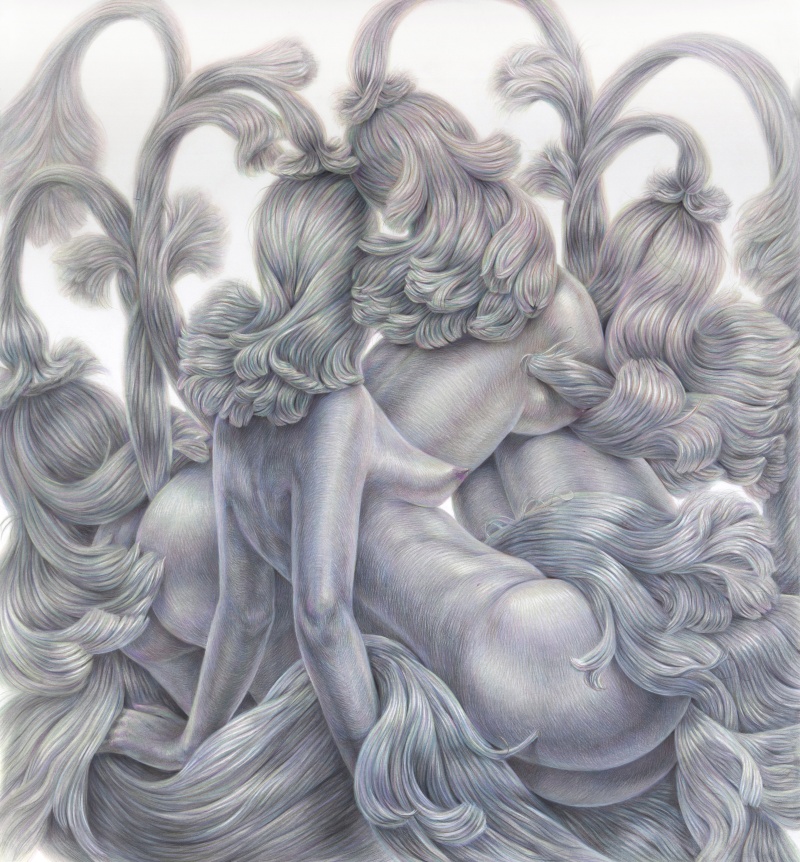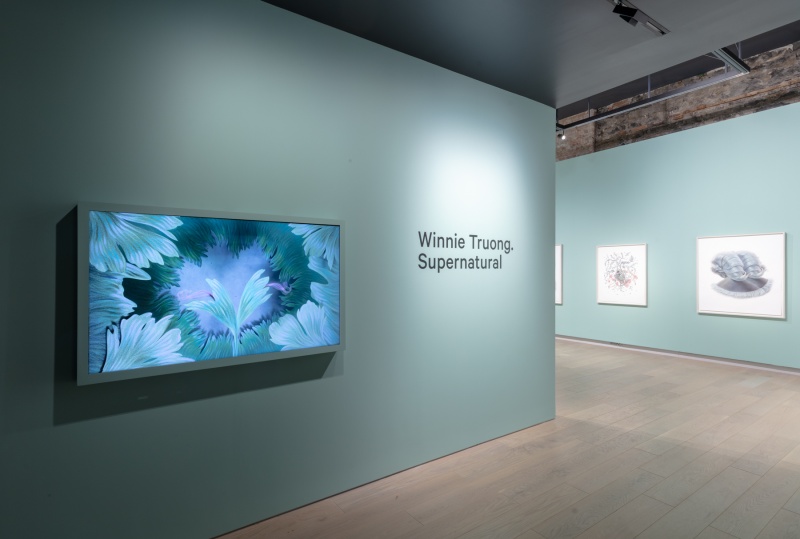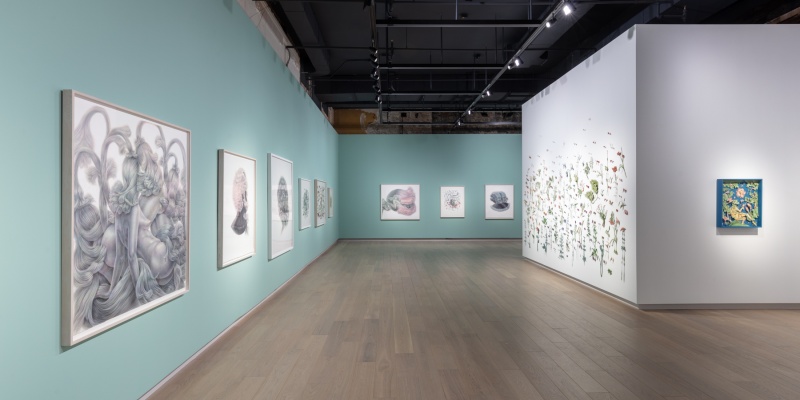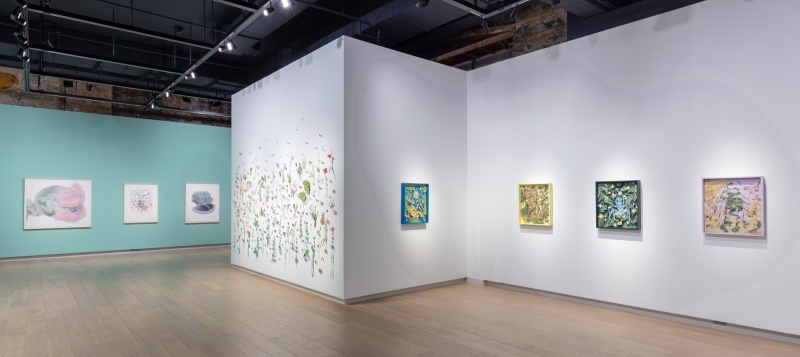Archives
Winnie Truong. Supernatural
Exhibition
SAW





Artist
This major solo exhibition of Toronto-based artist Winnie Truong’s drawing work featured the world premiere of her first foray into video installations. The exhibition brought together new and existing works that take up ideas of nature and femininity, care and support, and independence and interdependence.
Folded Flowers and Bending Bodies
The supernatural is broadly understood as anything beyond the visibly observable that transcends the laws of nature. To put it differently, it is someone or something not scientifically explainable but still thought to exist or occur, such as phantom beings and extrasensory perception. Teetering on the fine edge of the real and imaginary, Winnie Truong’s exhibition Supernatural finds its own way to describe the immaterial. The exhibition brings together new and existing works that abstractly take up ideas of nature and femininity, care and support and independence and interdependence. Interlinked bodies and plant life feature heavily in Truong’s recent works. Consisting of dense line drawings that are cut out and placed into assemblages, these forms may not be supernatural in a typical sense, but they do make allowances for the mysterious and otherworldly.
Each work within the exhibition functions as a world onto itself. To Make Hollow a Home, for example, encloses two figures in dark, plant-like waves. Unusually but contentedly contorted, the two beings are surrounded by purple flowers in different stages of bloom. The flowers and bodies are proportionately scaled to one another, confusing our sense of natural orders. This particular work seems to evoke a nighttime ritual or dreamlike garden exploit. Yet as with all of Truong’s works, there is not a singular narrative offered that we are intended to follow. Even without or perhaps because of this lack of narrative, it is easy to become fully absorbed in Truong’s countless lines, carefully considered colour fields and tempting details, which have become increasingly layered as she continues to expand her practice. The paper cut-outs started as a means to elude flatness and extend drawing into the three-dimensional. Urging the medium to operate more structurally, the paper cut-outs shift Truong’s mark-making into the realm of the sculptural. From here, Truong turned to animation as a way of giving movement and flexibility to her compositions. The two videos and multi-channel video installation in Supernatural focus in on agile figures gently stretching and extending their limbs as stems, petals, grasses and reeds spin, grow and sway around, on and through them. These slight and tender motions invite a closer look at these unusual beings, suggesting that they lead animated lives of their own in places full of unearthly backgrounds and self-sustained landscapes.
Truong’s uncovered bodies are rounded and strange. They do not quite conform to expected anatomical associations but are not completely unfamiliar either. These figures have changed significantly over time – creature-like features in earlier works give in to more human silhouettes in later ones, as with the works shown in Supernatural. This turn from the more fantastical to the more recognizable was not really intentional or planned, it simply happened through the artist’s process of making. What is constant in the work is that the bodies are always in relation. We see this in bodies holding on to one another with care and fused together in supportively acrobatic poses, or in how they wrap around and morph into and out of various plant and flower formations. These close contacts between bodies and between bodies and plants are intimate and alluring. They seem to speak to the artist’s interest in relationships and connectedness and making visible how we share space with one another and with other living forms.
As intimately presented as the bodies in these particular works are, their faces are hidden from view. Often obscured by hair, one of Truong’s signature preoccupations, or flowers, each figure retains a level of anonymity. This gesture is perhaps Truong’s attempt at offering some protection at being too visible and available to any and all manner of pervasive views. She thinks of these Wimmin-creatures, as she calls them, as defiantly looking away from us and rejecting a gendered gaze through their own agency of concealment.
Shared between each of Truong’s contained but interrelated worlds is a sensual and suggestive quality. This is not so much because her bodies are nude but because they assuredly take up space and seem to exude an unapologetic independence. It might also be because of the specific bends and folds of their bodies, they appear comfortable in their skin and contended to free-float in seductively suspended gardens and grasslands. Truong talks of her forms as birthing their own environments. This way of conceiving of these beings continually brings us back to notions of agency and relationships. So even as supernatural as these worlds might be, they ground us in feelings of closeness and connectedness.
– Noa Bronstein